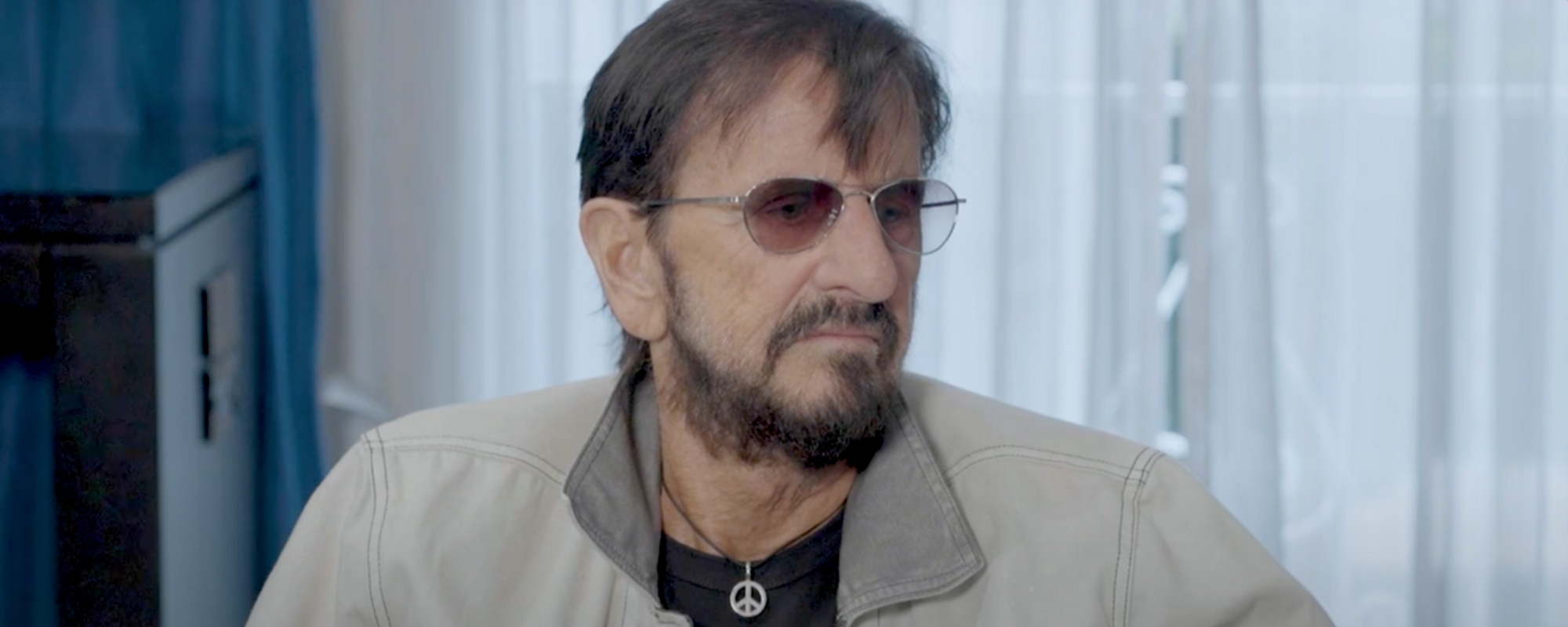Such harmonic adventurousness is also found on another All Things Must Pass piece, “Beware of Darkness.” This moodscape is a highly complex and original harmonic structure, which ranges from a G-major pedal through a thorny shift to G-sharp minor. By this point Harrison’s chord probing mirrored the search for answers found in the song’s lyrics. This was a sophisticated, creative act.
Videos by American Songwriter
Harrison once compared his part in the creative act as being akin to a cake maker who assembles a number of ingredients to produce an enjoyable cake. That Harrison spent many hours producing his musical cakes is not in doubt; he had his own studio at his Friar Park home, so he could record basic demos anytime he wished without needing to call in an engineer.
One of many tunes produced this way was “Life Itself,” a highlight of 1981’s mediocre Somewhere In England album. Over the years three versions of the song were heard, starting with a demo that alone represented many hours’ effort. This private work features four guitar tracks, three backup vocals and a little ukulele. This is supplemented by two slide guitars and Harrison’s vocal. The first mastered version added a rhythm section, whilst the final take was expanded to include a gospel Hammond organ and sweeping, multi-layered backup vocals. Such meticulous craftsmanship typifies Harrison’s art.
Many observers have been moved to say that Harrison’s songs are “unusual” and go in unexpected directions. This again is partly a function of the fact that he wrote many of his songs by first happening upon a chord pattern that caught his ear. Once he had “found” the chords he would set about eking out the tune within them.
This process is very much evident on a demo version of “Mystical One,” which was released as a bonus track on the reissue of his 1982 album, Gone Troppo. Thus, as Harrison often worked with complex chords and seemingly placed no dogmatic restrictions limiting which chords could be sequenced together, some unusual melodies were the result. The roots of this were in his study of Indian music.
More rooted in the Occidental/African tradition was his use of open tunings for some of his songs. This tendency seemed to derive from a number of sources. Some were straight blues renderings like “Sue Me Sue You Blues” from Living In The Material World, an album recently given the reissue treatment. The purpose of the open tuning here was to facilitate not only his dobro fills and solos, but also serve notice of how much of a Blues expert and aficionado Harrison was. Others amongst his open tuning pieces are more in the folk tradition, perhaps influenced by the deeply underrated guitar stylings of Joni Mitchell-whom he much admired. Two of Harrison’s mid-to-late ‘70s tunes are in this mould: “Dear One” (33 & ⅓) and “Your Love Is Forever.” The latter may eventually be recognized as one of his most accomplished creations. It offers an elegant melody against a backdrop of evocative, meditative chords that were inspired by the sound of an early Roland chorus effects pedal. The work is completed by a sumptuous guitar solo, which is an object lesson in the doctrine of “less is more.”
“Your Love Is Forever” is a prime Harrison ballad, one of many orthodox ballads he wrote. Naturally, “Something” is the most famous of these, but some of his less lauded ‘70s albums contain odes of similar quality. A case in point is “Learning How to Love You,” which is a sophisticated pop-jazz chart highlighted by an admirable acoustic guitar solo. Another, “Never Get Over You,” was a prominent track on the Brainwashed album. This remarkably sensuous song sees Harrison exploring the tension within a D to G-minor chord pattern, obviously one that held some fascination for him as it also frames “Rising Sun” on the same album.













Leave a Reply
Only members can comment. Become a member. Already a member? Log in.